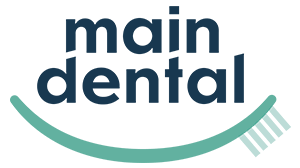The Big Picture
The CDC collects data on the dental health of children and adults in the US, and how frequently they visit the dentist:
- Percent of children aged 5-19 years with untreated dental caries: 13.2% (2015-2018)
- Percent of adults aged 20-44 with untreated dental caries: 25.9% (2015-2018)
- Percent of adults aged 18 and over with a dental visit in the past year: 64.9% (2019)
- Percent of children aged 2-17 years with a dental visit in the past year: 85.9% (2018)
Oral Health Issues in the USA
- Untreated tooth decay. More than 1 in 4 (26%) adults in the United States have untreated tooth decay.
- Gum disease. Nearly half (46%) of all adults aged 30 years or older show signs of gum disease; severe gum disease affects about 9% of adults. (Eke P, Thornton-Evans G, Wei L, Borgnakke W, Dye B, Genco R. Periodontitis in US adults: National Health and Nutrition Examination Survey 2009-2014. JADA. 2018;149(7):576-586.)
- Tooth loss. Complete tooth loss among adults aged 65-74 years has steadily declined over time, but disparities exist among some population groups. If left untreated, cavities (tooth decay) and periodontal (gum) disease lead to tooth loss. (Dye BA, Tan S, Smith V, et al. Trends in oral health status, United States, 1988–1994 and 1999–2004. Vital Health Stat. 2007; 11(248).)
- Oral cancer. Oral cancers are most common in older adults, particularly in people older than 55 years who smoke and are heavy drinkers.
- Chronic diseases. Having a chronic disease, such as arthritis, heart disease or stroke, diabetes, emphysema, hepatitis C, a liver condition, or being obese may increase an individual’s risk of having missing teeth and poor oral health. (Griffin S, Barker L, Griffin P, Cleveland J, Kohn W. Oral health needs among adults in the United States with chronic diseases. J Am Dent Assoc. 2009;140(10);1266-1274.)
- Patients with weakened immune systems, such as those infected with HIV and other medical conditions (organ transplants) and who use some medications (e.g., steroids) are at higher risk for some oral problems. (US Department of Health and Human Services. Oral Health in America: A Report of the Surgeon General. Rockville, MD: US Department of Health and Human Services, National Institute of Dental and Craniofacial Research, National Institutes of Health; 2000.)
- Chronic disabling diseases such as jaw joint diseases (TMD), autoimmune conditions such as Sjögren’s Syndrome, and osteoporosis affect millions of Americans and compromise oral health and functioning, more often among women.
The Covid-19 Pandemic
Delta Dental’s COVID-19 webpage presents a study on Americans’ attitudes to dental health during the Covid-19 pandemic:
- 90% of Americans believe that during the pandemic, maintaining oral health is essential to protecting their overall health
- 72% of Americans are paying closer attention to their oral care habits at home as a result of COVID-19
- 93% of Americans plan to visit the dentist in 2021
Caring For Our Teeth
- According to the American Dental Association Health Policy Institute, research shows that 95 percent of Americans regard their oral health as a critical part of their overall well-being. That said, despite this collective attitude, more than a third of all Americans fail to floss their teeth on a daily basis. Ideally, you should floss at least once per day using the ADA’s recommendations for effective flossing to help guide you.
- When they do floss, many Americans do it in strange ways. According to a survey from the ADA, 61 percent of US respondents admit to using fingernails to remove food from between their teeth, while 40 percent say they’ve used cards or folded paper. Another 21 percent admit to using cutlery to clean between their teeth, while 21 percent say they’ve used safety pins or strands of hair. What’s more, 63 percent of respondents admit that they knew these makeshift flossing instruments could cause harm, and 42 percent admitted that they did, in fact, feel pain while using them.
- While nearly eight out of ten American adults consider dental benefits important; only about 64 percent actually have them. This is especially concerning since people with dental benefits tend to have healthier teeth and gums, while people without dental insurance are more at risk of losing their teeth as they age.
- While you probably aren’t surprised to learn that excessive soda consumption can lead to significant dental problems; you may be shocked to learn that diet soda can be just as bad. According to a report published in the journal General Dentistry, a long-term diet soda addiction can cause as much dental damage as years of smoking crack cocaine or crystal meth.
- According to the American Dental Hygienists’ Association (ADHA), approximately 78 percent of all Americans will have at least one cavity by the time they reach age 17. The ADHA also reports that about 80 percent of the U.S. population has some form of gum disease.
- The Academy of General Dentistry reports that the average person brushes for only 45 to 70 seconds a day. This points toward a widespread problem, when you consider that dentists recommend that people brush for at least two minutes, twice per day, to maintain healthy teeth and gums.
- The ADHA also reports that 75 percent of Americans use their toothbrushes longer than they should. This can lead to bacterial buildup on the bristles, which can cause potential infections. The ADA recommends that people replace their toothbrushes about every three to four months, or even sooner if the bristles begin to fall out or become frayed. It’s also best to avoid enclosing your toothbrush in an air-tight plastic container since this can create moisture that promotes bacterial buildup. You should also avoid sharing toothbrushes and be sure to thoroughly rinse your bristles with clean tap water after you finish brushing.



